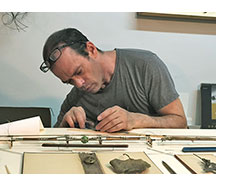|
|
||||||||||
|
BIOGRAPHY
Raised in New York's Hudson River Valley, and spending childhood summers in the Appalachian Mountains of Kentucky,
Working in a wide range of mediums, including wire drawings, sculpture, photography, and delicate mixed media collage, he handles often salvaged materials with empathetic reverence. Rhein's considered and intuitive use of repurposed objects is a hallmark of his work, frequently employing materials as varied as wire, plates and pages from vintage scientific journals, hardware, jewelry, crystals and other found objects. For Rhein, the act of giving such cast-offs a new life mirrors the artist's own spiritual path. Rhein addresses the universal aspects of the human condition—particularly its vulnerability, resilience, and possibilities for transcendence—as experienced after his diagnosis with HIV in 1987. With its explorations of eroticism, beauty and mortality, New York Times critic Holland Cotter writes that in Rhein's work, "the combination of art and craft, delicacy and resiliency, feminine and masculine, is exquisitely wrought and is, as it should be, seductive but disturbing." A presence in Manhattan's East Village since 1980, Rhein became a part of the neighborhood's arts community, with artists such as Greer Lankton, Luis Frangella, David Wojnarowicz, Keith Haring, Robert Mapplethorpe, Peter Hujar, and Mark Morrisroe. As the community permanently altered the city's cultural landscape, it was also profoundly devastated by HIV/AIDS. Through wire portraits, Rhein's ongoing work Leaves honors individuals he knew who died of complications from AIDS. Initially 80 portraits at its conception in 1996, Leaves has now grown to over 250 portraits—an evolving, personal memorial to the overwhelming losses due to the pandemic. Inspired by his uncle Elijah "Lige" Clarke (an early gay rights activist who, with his partner Jack Nichols, co-founded the first national gay weekly newspaper Gay, and the Washington Mattachine Society), Rhein relates to his art as a form of activism and healing. Rhein helped create Visual AIDS' Frank Moore Archive Project, an archive formed to support artists living with HIV/AIDS and preserve the works of those who passed away. View Rhein's page on Visual AIDS' Artist+ Registry here. Rhein received his BFA and MFA degrees through full scholarships at the School of Visual Arts, NY. His work has been exhibited internationally at venues such as: the Victoria and Albert Museum; The New Art Gallery, Walsall, England; the Pera Museum, Istanbul; American embassies in Austria, Cameroon, and Malta; the Addison Gallery of American Art; Lincoln Center; the Morris Museum, Morristown, NJ; the Islip Art Museum, NY; the Leslie-Lohman Museum of Gay and Lesbian Art; the Portland Museum of Art; the Smithsonian's Traveling Exhibition for the Millennium; Johnson & Johnson, New Brunswick, NJ; and Pavel Zoubok Gallery, New York, NY. Reviews of Rhein's work have appeared in numerous publications, including The New York Times, ArtNews, and Art In America. Rhein has received multiple grants and fellowships, including: the Pollock/Krasner Foundation, Edward Albee's "The Barn," and the MacDowell Colony. |
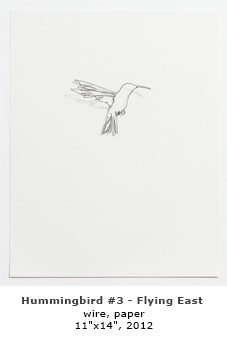 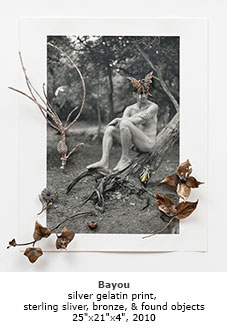 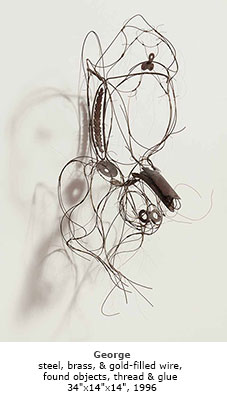 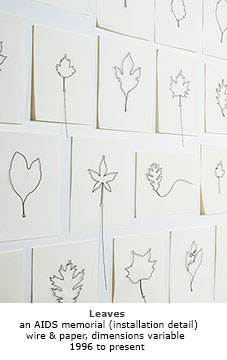 |
|||||||||
